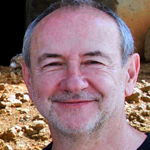Tra Su forest An Giang, Vietnam
5th place in Biotope Aquarium Design Contest 2018
![]() Vietnam. Luong Quoc Hung
Vietnam. Luong Quoc Hung

Volume: 356 L
Dimensions: 120x60x50 cm
List of fishes: Channa gachua, Trichopodus trichopterus, Mystus mysticetus
List of plants: Lemna minor, Nymphaea lotus, Pistia stratiotes, Nymphoides indica
Description of decorations: Dimocarpus longan wood, Dimocarpus longan roots,Leaves of Dimocarpus longan and ada aqua soil amazonia.
Description of equipment: External canister filter, Led lighting RGB 108w x2.
Water parameters: Temperature is 27-29°C, pH 6.2-6.6.
INFORMATION ABOUT BIOTOPE
Description of the area surrounding the biotope: Tra Su Forest is located in Van Giao Commune, Tinh Bien District, An Giang Province. This is a submerged forest typical of the western Hau river. Tra Su Forest is located at 10 ° 033 ‘to 10 ° 036’ North and 105 ° 002 ‘to 105 ° 004 ‘ east. The border of Viet Nam – Cambodia is 10km, located on the tourist route with the Cam mountain tourism, Mount Sam. It is a small area (860 ha), the total natural area of Tra Su forest is 874.16 ha, including two sub-zones: Sub-zone 6 (447.78 ha) and Sub-area 7a (426.38 ha). There are 712.94 ha of mangrove forest, seasonally inundated grasslands and swamps in An Giang province, of which 712.94 ha are forest areas and the area of biodiversity is limited to 175 ha. Season, marshes and a waterfowl. Natural conditions Tra Su forest is surrounded by dykes located in the area of agricultural cultivation of residents around the area. According to Tra Su Ranger Station, Tra Su forest is classified as acid soil Compaction, mechanical composition of clay loamy soil, medium humus content and being submerged, water level difference between forest and canal is 1.64 m in Sub-zone 6 and 1.88 m in sub-zone 7a. The pH measured in the adjacent paddy fields indicates that they have severe acid infestations with a pH of as low as 2.9, within the pH range of 6.3 indicating the beneficial effect of maintaining a soil submerged semi-natural
Not only rich in animals, Tra Su is also a gathering place of 140 plant species belonging to 52 families and 102 genera, including 22 species of trees, 25 species of shrubs, 10 species of vines, 70 species of grass, 13 species. aquatic species, 11 species of habitat, 78 species of medicinal plants and 22 species. Fish: 10 species occur throughout the year and 13 species occur only in the flood season. The most common species are: Trichopsis pumila, Channa gachua, Trichogaster trichopterus, Mystus mysticetus, Clarias batrachus, Mastacembelus favus, Oxyeleotris marmoratus, Channa striata. In the basin there are many aquatic plant species recorded: Lemna minor and green algae grow in the area. + Nymphoides indicum, Nymphaea lotus with lotus and Pistia stratiotes. Particularly Numphoides indicum thrives in the buffer zone. This combination of dense aquatic plants forms a layer on the surface of the water, providing a place for birds to feed.
Description of the underwater landscape of the biotope: Natural conditions Tra Su forest is surrounded by dykes located in the area of agricultural cultivation of residents around the area. According to Tra Su Ranger Station, Tra Su forest is classified as acid soil Compaction, mechanical composition of clay loamy soil, medium humus content and being submerged, water level difference between forest and canal is 1.64 m in Sub-zone 6 and 1.88 m in sub-zone 7a. The pH measured in the adjacent paddy fields indicates that they have severe acid infestations with a pH of as low as 2.9, within the pH range of 6.3 indicating the beneficial effect of maintaining a soil submerged semi-natural. In the flood season early August to late October the water level rises and is poured into the surrounding forest. This is a time of abundance, because the fish migrate into the submerged forest where abundant food sources are found and the breeding begins. Tra su forest represent a major source of plankton and other natural foods necessary for young fish, as well as for adult ones.Other than providing natural food for fish, Tra su forests provide them with the shelter from predators and create the shadow above water. A large amount of leaf litter forms a dense carpet, along with the roots of the flooded forest and branches. Water carries a large amount of detritus.Organic matter is decomposed from the leaves of forest trees, including animal residues, plant residues, bacteria and other microorganisms.
Description of the parameters of the habitat: Temperature is :27-29°, pH 6.2 -6.6 depending on the season.
List of fishes and invertebrates occurring in the nature biotope: Channa gachua, Trichogaster trichopterus, Mystus mysticetus, Macrobrachium rosenbergii, Botia beauforti, Oxyeleotris marmoratus, channa Striata, Trichopsis pumila, Mastacembelus favus.
List of plants found in the nature biotope: Lamna minor, Nymphaea lotus, Pistia stratiotes, Numphoides indicum, Eleocharis duleis, Ludwidgia adscendens, Ipomea aquatica, Cyperus iria, Sesbania cannabina, Panicum repens, Phragmites vallatoria, Malaleuca cajuputi.
Sources of information:
Comments of the members of the jury of Biotope Aquarium Design Contest 2018

This aquarium is very well designed. You used too much materials therefore this work looks very detailed. You can feel the how aged this natural river system when you look at this aquarium. This biotope looks really natural, the light you used, materials, species are really compatible. Impressive job, congrats.
In my opinion, catfish breathe too fast in this tank. I’m not sure what might be the reason, maybe too much tannins from the abundant driftwood and decaying organic matter? Except of this, aquarium looks interesting is well balanced aesthetically, not too many fishes, plenty of hideouts and large “footprint” (120×60 cm, you can rarely find tanks of this proportion in the hobby), which gives the fishes lots of area to swim.

That’s indeed the look in a black water pond or part of a peat swamp. The arrangement is as great as the species composition is a natural one. The view outside of the water is well done. It all indeed looks like just taken out a piece of the natural environment and directly transferred in a tank. Natural impressive beauty at its best.

It is a beautiful biotope with gourami, catfish and snakeheads. I cannot believe that this can be recreated in the home reservoir. Thanks to the author for the entry!
